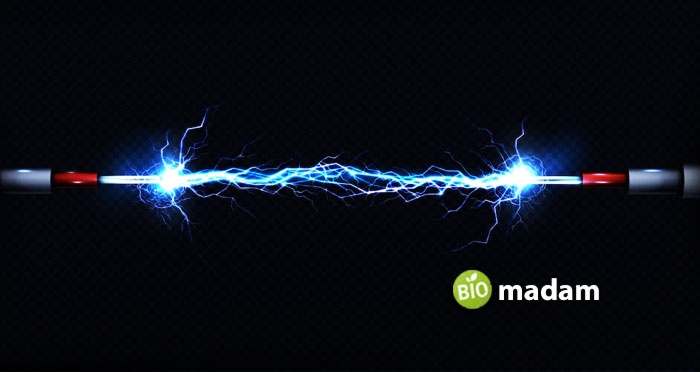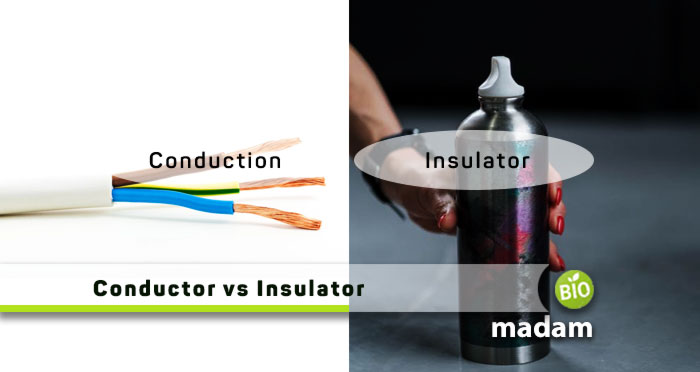Conduction and insulation are important aspects of understanding the characteristics of materials and their uses. Conductors conduct electricity, while insulators do not allow the passage of electric current through them. Conduction and insulation depend on the physical and chemical properties of the material. Eventually, they are used in manufacturing different industrial products.
Let’s tell you the differences between conductors and insulators and everything you want to know.
Comparison Table
| Characteristics | Conductors | Insulators |
| Definition | Passes electricity | Do not allow electricity to pass |
| Electric Charges | Present | Absent |
| Electron Movement | Present | Absent |
| Potential | Equal on all sides | Absent |
| Forbidden Gap | Absent | Present |
| Energy Storage | No | Yes |
| Covalent Bonds | Weak | Strong |
| Resistance | Low | High |
| TCR | Positive | Negative |
| Examples | Copper, silver, and aluminum | Plastic, wood, and ceramic |
| Uses | Electrical appliances | Insulating material |
What are Conductors?
Conductors are materials that allow electricity or electric current to pass through them.
The conduction of electricity occurs by the free movement of electrons in the conducting material due to potential differences. The conductivity of a conductor is determined by the number of freely-moving electrons in the outermost shell. The valence and conduction bands of such materials overlap, creating space for the movement of electrons. Thus, they do not have any forbidden energy gap.
The flow of electrons generates an electric current within the substance or mixture. The charge is distributed across the material’s surface, which results in the movement of electrons in the other object. The electric charge transfers to the conductor and keeps distributing until the repulsion force reaches the minimum value.
A high conductivity also means low resistance.
Metals are typically the best conductors of heat and electricity used in producing other products that conduct electricity. Copper, and silver are popular electric conductors, while mercury is said to be a good heat conductor. However, graphite can conduct electricity despite not being a metal.
Did you know that humans are also electric conductors?
Yes. Humans are conductors. And that is why we get an electric shock.
Though, conduction is a physical change that is eventually reversible.

Properties of Conductors
- Conductors exhibit high conductivity and low resistance.
- Conductors always have a zero charge density.
- The temperature coefficient of resistance in conductors is positive.
- Conductors can have varying resistivity according to their properties.
Uses of Conductors
Conductors like silver and copper are widely used in electrical appliances. Aluminum wires are utilized in the production of power transmission wires. Steel, copper, aluminum, lead, and mercury have multiple other applications in our daily life.
Examples of Conductors
Steel, copper, bronze, mercury, aluminum, bronze, iron, and graphite are common conductors of electricity.
What are Insulators?
Insulators are materials that do not allow the passage of electricity or heat through them.
The properties of such material are opposite to conductors.
Some substances do not conduct electricity as good as conductors because the valance and conductive bands are separate. This does not give enough space for the electrons to move freely. Eventually, the forbidden gap is massive between the atomic layers compared to conductors. This increased gap restricts the movement of electrons between both bands, preventing current flow through these materials.
However, being an insulator does not mean electric current does not pass through the material. It is because no material is a perfect insulator. They have strong covalent bonds instead of metallic or ionic bonds between the atoms of the element. Thus, insulators have low conductivity and high resistance.
Non-metals are insulators compared to metals.

Properties of Insulators
- Insulators have high resistance and low conductivity.
- The covalent bonds in insulators are strong and difficult to break.
- The temperature coefficient of resistance is negative in insulators.
- Insulators convert into conductors at the breakdown voltage.
Applications of Insulators
Insulators are used in housing and construction energy to protect from hot and cold. They help trap the inner heat and save you from the harsh environment. PVC is another insulator that covers electric wires to prevent accidents.
Examples of Insulators
Dry wood, rubber, glass, plastic, diamond, and air are everyday insulators around us.
Differences Between Conductors and Insulators
Definition
Conductors
Conductors are materials that conduct electricity by allowing the passage of electric current through them.
Insulators
On the contrary, insulators restrict the passage of electricity and heat through them.
Electric Charges
Conductors
Electric charges are present on the surface of conductors.
Insulators
In contrast, insulators do not have electric charges on their surface.
Electron Movement
Conductors
Electrons in conductors are in continuous movement, enabling electric charge transfer.
Insulators
The electrons in insulators, on the other hand, do not exhibit movement like those in conductors.
Potential
Conductors
The potential is equal on all points on the conductor.
Insulators
Whereas, in the insulators, the potential is zero at all times.
Forbidden Gap
Conductors
Conductors do not have a forbidden gap due to the overlapping conduction and valence band.
Insulators
While, on the other side, insulators exhibit a large forbidden gap as the conduction and valence bands do not overlap.
Energy Storage
Conductors
Conductors do not save energy in the presence of a magnetic field.
Insulators
On the contrary, insulators are observed to save energy when placed in a magnetic field.
Covalent Bonds
Conductors
Conductors have weak covalent bonds between their atoms.
Insulators
Insulators possess comparatively stronger covalent bonds.
Resistance
Conductors
Conductors have minimal resistance due to electric charges.
Insulators
In comparison, insulators have quite a higher resistance than conductors.
Temperature Coefficient
Conductors
The temperature coefficient of resistance is positive in conductors.
Insulators
Insulators have a negative temperature coefficient of resistance.
Examples
Conductors
Copper, silver, and aluminum are commonly used conductors.
Insulators
Similarly, there are numerous examples of insulators, including plastic, wood, and ceramic.
Application
Conductors
Conductors are utilized in electrical appliances to conduct electric current.
Insulators
Industries use insulators to produce insulating materials for homes and other materials.
The Bottom Line
Conductors and insulators are essential for manufacturing different types of products. They enable us to understand the reasons behind different physical and chemical changes depending on the conductivity or insulation of a material. Conductors conduct electricity, while insulators restrict the transfer of electricity or heat through them. The passage of electrons occurs due to the overlapping valence and conduction bands. On the other hand, insulators have a large forbidden gap disabling the movement of electric current. Silver and copper are conductors, while ceramics and plastic are insulators.
FAQs
What is the main difference between conductors and insulators?
The ability of conductors to allow electric charge to pass through them is the main difference between conductors and insulators. It takes place through the movement of electrons through the material.
Is water a conductor or insulator?
As tap water contains impurities like calcium, sodium, and magnesium salts, it is an excellent conductor of electric current. However, pure water free from these impurities is a perfect insulator.
Is glass a conductor?
While glass is typically an insulator at room temperature, it becomes an exceptional conductor of electricity at high temperatures. You may be surprised that air becomes conductive when exposed to very high temperatures.

Jeannie has achieved her Master’s degree in science and technology and is further pursuing a Ph.D. She desires to provide you the validated knowledge about science, technology, and the environment through writing articles.

